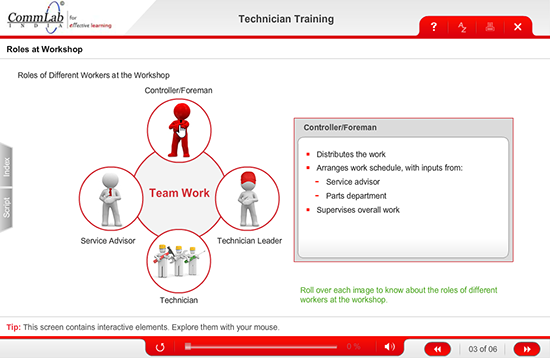10 Learning Design Strategies to Engage Learners Better

Trainers all over the world are facing many challenges to keep learners engaged and stay on track. It is a well-known fact that today’s learners are unable to pay attention to the trainings and they are easily diverted from what they are doing, it’s because of technology, Internet, social networking sites (Facebook, Twitter, etc.), messengers, phones calls, text messages, mails, etc. and all these lead to short attention span and easy distraction.
A study by Microsoft study focuses on the decreasing attention span of humans – from 12 seconds in 2000 to 8 seconds due to Smartphones.
How to overcome these challenges? How to keep learners engaged throughout the course? How to increase learners’ attention span? The answer is to incorporate effective learning strategies in the training programs, which will keep learners fully engaged and concentrate effectively on the trainings meant for them. Let’s see what effective learning strategies are.
Frame Meaningful Learning Objectives
Learning objectives should be clear to enhance learners’ performance rather than missing the track. If the learners find the course irrelevant, then it becomes very difficult for the trainers to keep them engaged and motivated throughout the course. So, to overcome this difficulty, you need to tell the learners what they are going to learn from the course at the beginning of the course itself.
Learning objectives should be meaningful and relevant to the content. For example, learning objectives for a safety training course would be different from an induction training course. The employees taking safety training need to apply the knowledge at the workplace whereas those taking induction training need to know the company’s mission and vision. Therefore, it is very crucial to set the learning objectives accordingly.
Having meaningful, clear, and achievable learning objectives will motivate learners to engage themselves better.

Keep the Course Structure Simple
Keeping the course structure simple and comprehensible will help learners see where they are heading. This would make them self-assured and confident of crossing any hurdles in their learning or training path.

KNOW Prior Knowledge
Being aware of what the learner is already familiar with, and associating the new lessons with already known facts will help in faster learning and better information retention.
Organize Content Logically
Content needs to be organized logically by chunking or breaking it up into modules with topics and sub-topics, which will help learners prioritize and identify the core elements of the course.
Organize the content in such a way that will help learners concentrate on what they “need to know” and “nice to know” information. Well organized content is easier to understand, learn, and remember for a longer period of time and it will help learners easily accommodate new information, in their existing knowledge base.

Create Engaging Visuals
Visuals are very effective elements as they support the psychological learning process. Visuals help learners retain information for a longer period and apply it on their jobs. Creating engaging visuals will make the course more appealing and can hold the learners’ interest throughout the course.

Use Effective Interactivities
Benjamin Franklin once remarked, “Tell me and I forget, teach me and I may remember, involve me and I learn.” So, learners must be involved in the trainings for effective learning. This is possible through interactivities as they results in learners’ engagement. Keeping the course interactive will enhance interest in the learners’ mind, by making them feel noticed and important.

Include Realistic Scenarios
According to an article by Ruth Clark, scenarios help accelerate learning. Realistic scenarios help connect the learner to the real world, make them feel more connected to the subject, and make their own decisions based on prior knowledge. Presenting realistic scenarios, which are relevant to the content, will make the course interesting and engaging for the learners.
Use Case Studies
Case studies create a quick need to learn and bring interest to take the training session. At suitable intervals in the course, allowing the learners to watch, or listen to interesting case studies, will inspire the learners greatly. Case studies help learners understand the theory and apply it in real life and also allow them achieve multiple results simultaneously within a short period of time.

Incorporate Problem-solving Situations
Imparting skills and knowledge through problem-based approach enables learners relate themselves to a particular situation and apply it in real-life accordingly. Asking learners to provide solutions for the problems will help them sharpen their problem-solving skills.

Develop Assessments to Reinforce Learning
Assessments are used to assess learners and reinforce learning to a greater extent. Assessing learners intermittently is another way of keeping them engaged. Throwing a quick quiz or puzzle at the learners, appreciating them for their sensible answers and providing an explanatory feedback, will keep them happy and motivated.

Trainers, who can keep the above listed learning design strategies in mind, are sure to hold the attention of their learners, while making both learning and training interesting and enjoyable for their learners and for themselves!
Please do share your views…
Editor’s Note: This post was originally published in December 2012 and has been completely revamped and updated for accuracy and comprehensiveness.






